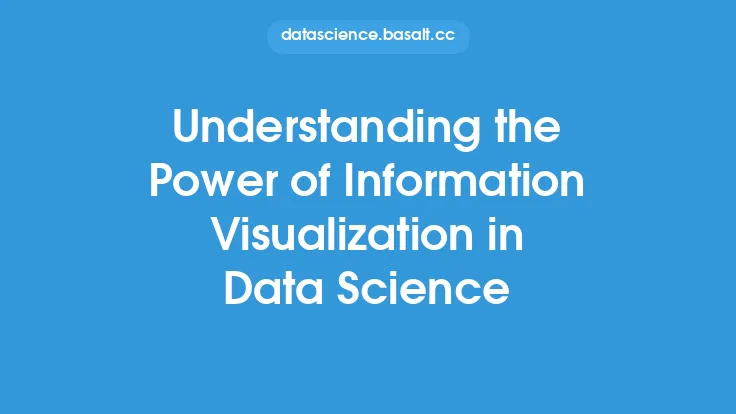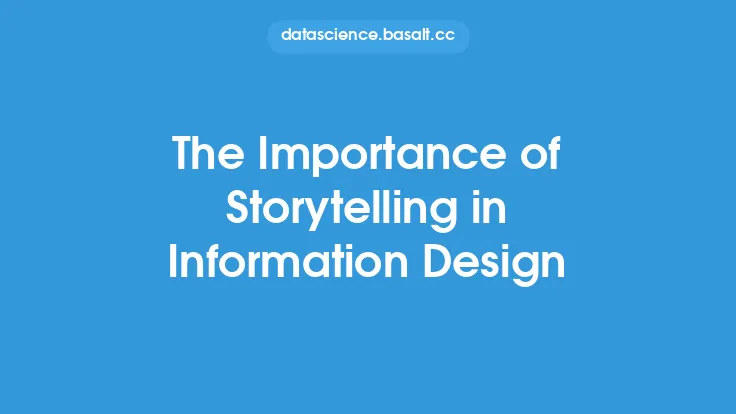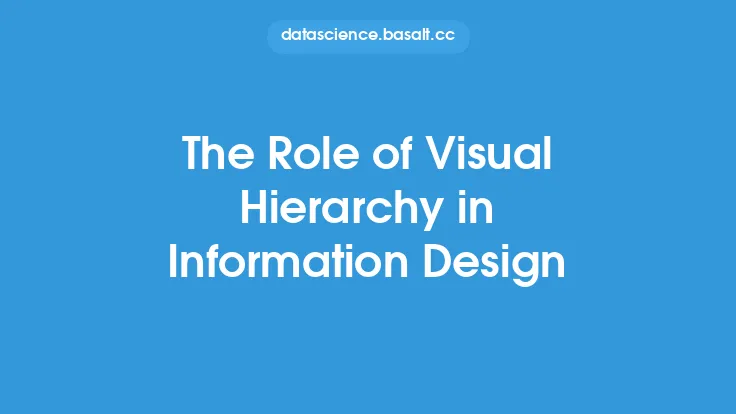Information design is a crucial aspect of data storytelling, as it enables individuals to effectively communicate complex information to their audience. At its core, information design is about presenting data in a clear, concise, and meaningful way, allowing users to quickly understand and make informed decisions. This involves a combination of visual, textual, and interactive elements, all working together to convey information in an intuitive and engaging manner.
Introduction to Information Design Principles
Information design principles provide the foundation for creating effective and engaging information designs. These principles include clarity, simplicity, and consistency, which are essential for ensuring that the information being presented is easy to understand and navigate. Clarity refers to the ability of the design to clearly communicate the intended message, while simplicity involves avoiding unnecessary complexity and focusing on the essential elements of the information. Consistency, on the other hand, ensures that the design elements are used in a uniform and logical manner throughout the presentation. By applying these principles, designers can create information designs that are both aesthetically pleasing and highly effective.
The Role of Typography in Information Design
Typography plays a vital role in information design, as it can greatly impact the readability and overall effectiveness of the presentation. The choice of font, font size, and line spacing can all influence how easily the information can be read and understood. A well-designed typographic system can help to create a clear visual hierarchy, guiding the user's attention through the information and emphasizing key points. Additionally, typography can be used to convey emotion and tone, adding depth and context to the information being presented. By carefully selecting and applying typography, designers can create information designs that are both visually appealing and highly readable.
Color Theory and Information Design
Color theory is another critical aspect of information design, as it can be used to convey meaning, create visual interest, and guide the user's attention. Colors can be used to categorize and differentiate between various types of information, making it easier for users to quickly understand and navigate the presentation. Additionally, color can be used to create visual hierarchy, with more prominent colors drawing attention to key points and less prominent colors providing background information. However, it's essential to use color in a way that is accessible and understandable to all users, taking into account color blindness and other visual impairments. By applying color theory principles, designers can create information designs that are both visually engaging and highly effective.
The Importance of White Space in Information Design
White space, also known as negative space, is a critical element of information design, as it helps to create a clear and uncluttered visual environment. White space refers to the empty space between and around design elements, and it plays a crucial role in guiding the user's attention and creating a sense of visual flow. By using white space effectively, designers can create a sense of breathing room, making it easier for users to focus on the information being presented. Additionally, white space can help to create a sense of sophistication and elegance, adding to the overall aesthetic appeal of the design. By balancing white space with other design elements, designers can create information designs that are both visually appealing and highly effective.
Information Design and Accessibility
Accessibility is a critical aspect of information design, as it ensures that the information being presented is available to all users, regardless of their abilities or disabilities. This involves designing for users with visual, auditory, motor, or cognitive disabilities, and providing alternative formats and accessibility features to ensure that everyone can access the information. This can include providing text alternatives for images, using high contrast colors, and ensuring that the design is navigable using a keyboard or other assistive technologies. By designing for accessibility, designers can create information designs that are both effective and inclusive, providing equal access to information for all users.
Technical Considerations for Information Design
From a technical perspective, information design involves a range of considerations, including file formats, resolution, and scalability. Designers must ensure that their designs are optimized for various devices and screen sizes, and that they can be easily viewed and interacted with on different platforms. This may involve using vector graphics, which can be scaled up or down without losing quality, and optimizing images and other media for web use. Additionally, designers must consider the technical limitations of different file formats, such as PDF, HTML, and CSV, and choose the format that best suits the needs of the project. By taking a technical approach to information design, designers can create designs that are both visually appealing and highly functional.
Best Practices for Information Design
Best practices for information design involve a range of strategies and techniques, including user testing, iteration, and refinement. Designers should always test their designs with real users, gathering feedback and making adjustments as needed to ensure that the design is effective and easy to use. Additionally, designers should be willing to iterate and refine their designs, making adjustments and improvements over time to ensure that the design remains effective and engaging. By following best practices and staying up-to-date with the latest design trends and technologies, designers can create information designs that are both highly effective and visually appealing.





